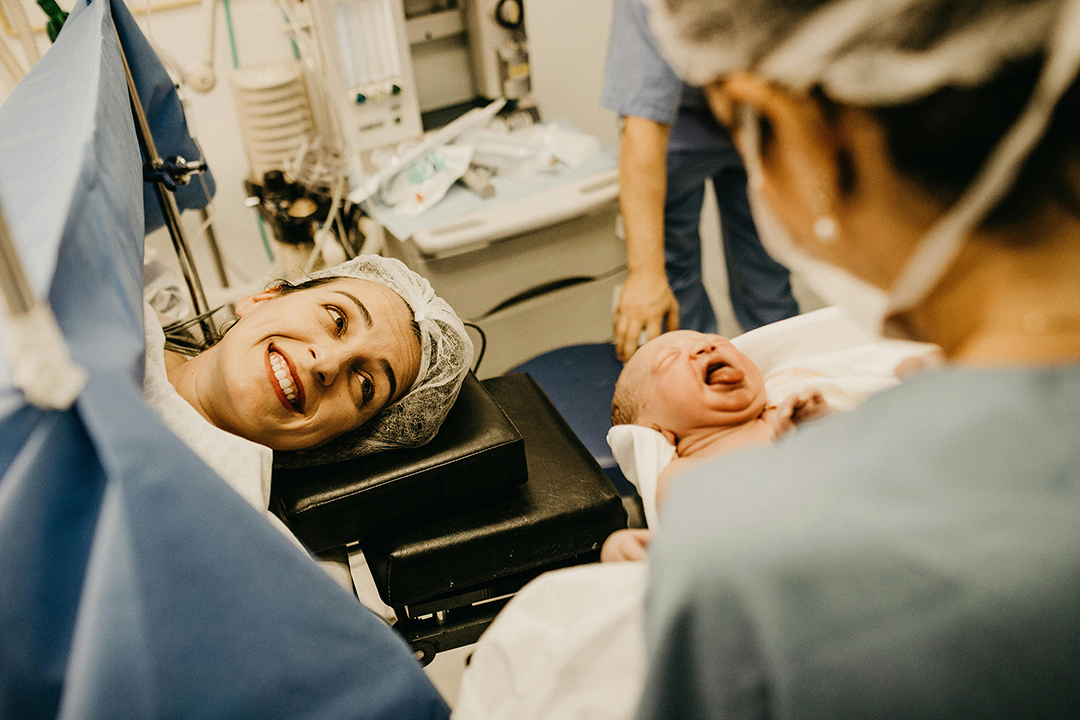During pregnancy, the joy of expecting is often accompanied by the concern of premature delivery, especially among multiples. Twins and triplets are at higher risk for premature birth due to the increased demands on the mother’s body and the limited space for the babies to grow. Additionally, common complications such as pre-eclampsia, gestational diabetes, and intrauterine growth restriction (IUGR) are more prevalent in multiple pregnancies, often necessitating early delivery for the health and safety of both the mother and babies. The likelihood of premature rupture of membranes (PROM) is also higher, which can trigger preterm labour.
Today, we share the inspiring story of Clara Lam, a first-time mother of trichorionic triamniotic (TCTA) triplets in Singapore. Clara's journey from her 33-week checkup to the emergency C-section that brought her babies into the world is a testament to resilience, faith, and the importance of expert medical care.

Hi Clara! Thank you for agreeing to share your story with our readers at Multiples Matter. Can you take us back to the beginning of your story? What happened during that fateful 33-week checkup?
In July 2018, I went for my routine 33-week checkup. My maternal fetal medicine doctor, Professor Arijit Biswas from National University Hospital, told me, "Clara, you have to be admitted now." My blood pressure was high, and he suspected pre-eclampsia. That was the start of all the drama. I was brought to the delivery suite immediately for monitoring, where they discovered that I also had frequent contractions.
That sounds intense. What kind of treatments did you receive in the delivery suite?
They put me on drips to manage the contractions, administered jabs to mature the babies' lungs in case I had to deliver early, gave me blood pressure meds, and monitored my blood pressure hourly throughout the night. The worst part was the four probes strapped across my tummy to track the triplets’ heartbeats and my contractions. It made my already super-stretched skin unbearably itchy! I also couldn't get out of bed, so I had to use a bedpan for the first time in my life.
It must have been a challenging time for you. How did your husband react to all this?
That evening, when my husband came, I could see tears in his eyes. Being a doctor himself, he knew very clearly all the risks that pre-eclampsia brings to the babies and me. We had hoped to keep the babies until week 36, but that night we prayed and surrendered our plans to God, trusting His good and sovereign plan, whatever it might be.
How did things progress from there?

The next day, I was moved to the normal ward, which was a relief. We managed to downgrade to a C-class ward to keep the medical bills more manageable. It wasn't the most comfortable setup, with no TV, but it eased my mind about the costs. About 3 days later, I was told I could be discharged to monitor my blood pressure at home. I was so happy! But the happiness didn't last long. On my second day at home, my blood pressure spiked again, and I started feeling contractions in the evening. When I called the delivery suite, they advised me to come in immediately.
So, you had to go back to the hospital. What happened next?
My husband asked me to pack my bags, anticipating that I would need to stay in the hospital until I delivered. That night started another round of drips, hourly blood pressure monitoring, and those dreadful probes around my tummy in the delivery suite. I was shifted to the normal ward after a day of monitoring. Thankfully, many friends and family visited to keep me from getting too bored!
Did the contractions continue?
Yes, the contractions returned a day and a half later, sending me back to the delivery suite. Most of the junior doctors thought it would be better to deliver soon, however Prof. Biswas recommended keeping the babies in as long as possible. We trusted his judgement. By Saturday evening, I told my husband, "Tomorrow is week 34! We should write a letter to the babies to celebrate that they stayed so far!" I remember a nurse not allowing me to eat my Burger King Whopper that night as she was worried I had to do a c-section in the morning. After negotiation, I was allowed to eat half the burger, haha!
On Sunday, while choosing my lunch, the menu seemed blurry to me. I said, "I can't see properly." The medical officer and my husband exchanged looks, and the MO quickly called Prof. Biswas. That was the second time I'd ever seen my husband teary. Prof. Biswas decided we needed an emergency C-section at 2pm. By 3pm, we were in the operating theatre.
That must have been quite a moment. How did you feel when they decided to perform the emergency C-section?
I felt a sense of relief when Prof. Biswas said we would get the babies out that day.
I had fought hard and endured as much as my body could take.
It was finally time to rest. The delivery was actually the easiest part of my entire pregnancy. After the C-section, I had the best sleep! No more 12 kg bowling ball on me, no more aching all over, or bad water retention. A few days later, another consultant I met in the wards even joked, "So you’re the one who caused some drama on Sunday."
How do you feel about the care you received during this challenging time?
My husband and I are incredibly grateful to Prof. Biswas. He not only has the expertise but is also a really caring and thoughtful doctor. He visited me every day while I was warded, even though I was a downgraded patient and he didn't need to. We are also deeply thankful to God for the safe delivery of our babies. Delivering them at week 34 was a blessing in disguise as it gave me time to recover before one of my babies was discharged. God really knows best!
Can you share more about your recovery process after the C-section and how you managed with three newborns?

As mentioned earlier, I consider it a blessing in disguise that the children needed to stay in the hospital's NICU after my discharge. I went home first, followed by T2 two weeks later. T1 and T3 came back a week after that. Their staggered discharge allowed me to ease into recovery instead of having all three children back at the same time. Also, my mum came over to help bathe T2 with my helper, so I didn't have to bend over with the C-section wound.
How has life changed for you and your family since the arrival of the triplets?

The arrival of the trio definitely impacted our finances, "me time," and social life, especially in the beginning. But I would say that if their sleep is good and a routine is in place, you'll hopefully start to find ways to work around it and reclaim some pockets of "me time," social life, and even date nights. These are important too because, after all, I want to nurture my marriage so that the children have a healthy family environment to grow up in. I also want to teach them the importance of self-care!
Can you talk about the support system you had during your pregnancy and after the birth of your babies?
We were thankful to have two awesome confinement nannies. It also helped that we gave the confinement ladies a heads up that their start date was not fixed due to the nature of a multiple pregnancy. They agreed to be on standby to come when the triplets came back.

We also hired two domestic helpers, and both sets of grandparents helped out on and off. I went on no-pay leave arrangement for one year. After my triplets started attending the Playgroup Programme, I returned to work. The WhatsApp chat with other triplet mums in Singapore was truly a godsend!
What advice would you give to other mothers who might face similar challenges?
Sleep hygiene is really important! I think this might be my best advice: practice good sleeping habits early on.
Even though they may be premature and you just want to pick them up to protect them, if they get into the habit of being cuddled or rocked to sleep, it can become very challenging—especially for parents of multiples.
–––
Thank you so much for sharing your incredible journey of triplet pregnancy and birth with us, Clara. Your story is a testament to the strength of mothers everywhere.
Wish to be featured or have any tips to share with our parenting community? Drop us a note here!
All content from this website, including images, cannot be reproduced without credits or written permission from Multiples Matter.








